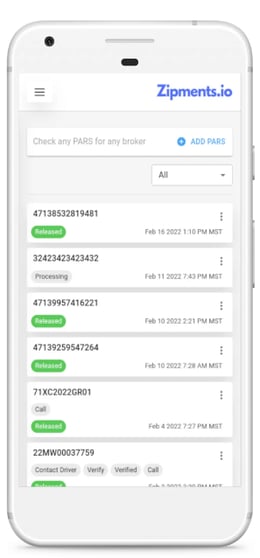The import process can be a confusing one, and a customs broker can be an excellent resource....
The Most Important Documents In Cross-Border Or International Shipping
When it comes to international shipping, there are certain documents that you must possess in order to successfully clear customs. Filling out freight documents can be confusing, especially if you are new to the industry. There are regulations which must be followed, and documentation which is specific to each country one may be importing to. The right documents can make or break your customs clearance, so it's important to take note of the essential paperwork you may need, which can make all the difference for a shipment.
-1.png?width=2240&height=1260&name=Brown%20Simple%20Tips%20Shoot%20Blog%20Banner%20(7)-1.png)
Whether you're moving freight internationally for the first time, or you've been shipping international for years, knowing what customs documents are required by your destination country is important. Each country has specific document requirements for imports. In cross-border shipping, here are some key pieces of paperwork you need to have:
Bill of Lading
One of the most important documents when it comes to shipping commercial goods is the Bill of Lading or BOL. The document contains information such as destination, goods type, description and volume. Some of the key details on the document are the parties involved, such as shipper and consignee information and relevant dates of shipping or pick up. The document acts as a contract between the parties, to document ownership of the goods, and is issued by the carrier to the shipper or freight forwarder
Customs Invoice
In order for goods to clear customs, they need to be accompanied by an invoice. This piece of paperwork is a receipt which the seller issues to the buyer or importer, to solidify the purchase, thus it acts as a proof of sale. Without the customs invoice, goods will not be able to cross the border. Vital information on the invoice such as origin, item description, relevant HS codes, consignee information and terms of sale is important to help calculate duties, fees or taxes, once the goods are at customs. You will need a customs invoice which is approved in the country you are importing to, so for instance going into Canada, you will need a Canada Customs Invoice.
You can complete your customs invoice in less time using the Zipments CBP and CBSA approved customs invoice forms. The easy template uses AI technology to generate tariff or HS Codes, so your invoice is correct the first time.
Certificate of Origin
The Certificate of Origin outlines where the goods come from. The document acts as a declaration that goods have been shipped, obtained or manufactured in a particular country. In order for goods to be processed by customs correctly, the origin is important, as it helps ensure that the goods adhere to international trade laws. The document does also contain shipper name, addresses, cargo description or measurements, and relevant transport details.
PARS or PAPS Number
When goods are being transported across the U.S. and Canada border, they will need adequate documentation and data to clear customs. A PARS number is part of the pre-arrival review system for Canada, in which a label containing the carrier code and shipment number is used to identity carriers and shipments to CBSA or Canada Border Services. When coming into the United States, you will need the PAPS number, for the pre-arrival processing system.
ACE/ACI eManifest
Most documentation for shipments nowadays is submitted electronically using a pre-arrival system set out by both CBSA and CBP. The ACI is the Advanced Commercial Information system, set out by CBSA, to report shipments coming in and submit pre-arrival data. The submission is used for both risk assessment and clearance, and is mandatory.
The United States has their own version of the system, with ACE, or Automated Commercial Environment. The system helps determine admissibility of goods by examining the documents and data submitted. These pre-arrival systems work to monitor both shipments and drivers coming across the border, and help speed up the clearance process, as many drivers can then use their PARS/PAPS numbers to track whether they have been cleared to cross or not, before arriving at the border.
Packing List
The packing list or slip is a document which contains the complete list of items in the package and relevant parts to the shipment, such as model or serial numbers, HS codes, dimensions, weight or quantity. It acts as a summary of what is within a shipment, and provides important information to understand the packaging of the shipment, so it is easily identified by customs or relevant parties.
Additional Certification
Some shipments may require additional certificates or paperwork from government agencies such as the FDA. Remember that some goods, such as food, are subject to stricter guidelines. It is important to research regulations of the country you are importing to, as they relate to your specific types of goods, in order to adhere to the rules.
Customs requirements for shipping internationally can get a little tricky, so knowing what to expect will make all the difference. Customs forms, import regulations and export requirements vary widely from country to country. In most cases, you don't need to pay hefty fees to get your goods from one place to the next – you can use the Zipments.io platform to compile and share your customs paperwork, and streamline the process, so you stay in control!


-1.jpg?height=200&name=Blue%20Illustrated%20Dots%20Hosting%20Provider%20Presentation%20(13)-1.jpg)
.png?height=200&name=Brown%20Beige%20White%20Minimalist%20Aesthetic%20Elegant%20Special%20Price%20Ice%20Cream%20Sundae%20Only%204%20Dollars%20Ingredients%20Banner%20Landscape%20(1).png)
.jpg?height=200&name=Blue%20Illustrated%20Dots%20Hosting%20Provider%20Presentation%20(11).jpg)